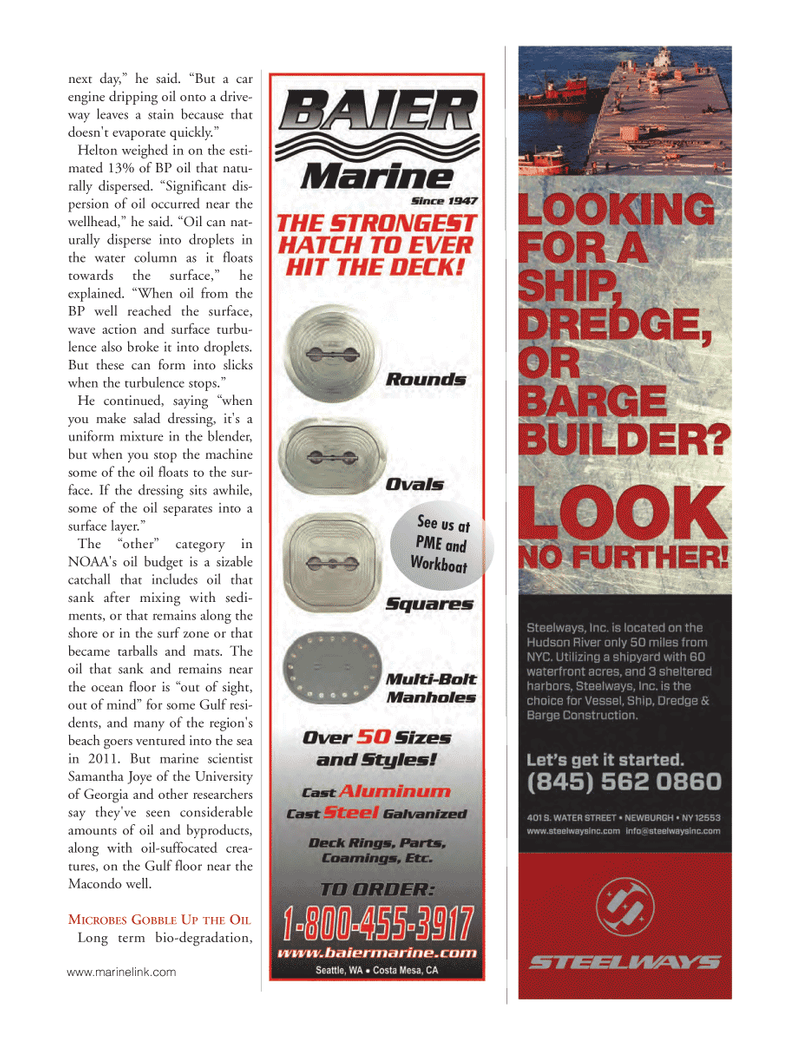
Page 35: of Marine News Magazine (September 2011)
The Environmental Edition
Read this page in Pdf, Flash or Html5 edition of September 2011 Marine News Magazine
www.marinelink.com next day,? he said. ?But a car engine dripping oil onto a drive- way leaves a stain because that doesn't evaporate quickly.? Helton weighed in on the esti- mated 13% of BP oil that natu-rally dispersed. ?Significant dis- persion of oil occurred near the wellhead,? he said. ?Oil can nat- urally disperse into droplets in the water column as it floatstowards the surface,? he explained. ?When oil from the BP well reached the surface, wave action and surface turbu- lence also broke it into droplets. But these can form into slicks when the turbulence stops.?He continued, saying ?when you make salad dressing, it's a uniform mixture in the blender, but when you stop the machine some of the oil floats to the sur-face. If the dressing sits awhile, some of the oil separates into asurface layer.? The ?other? category in NOAA's oil budget is a sizable catchall that includes oil thatsank after mixing with sedi-ments, or that remains along the shore or in the surf zone or that became tarballs and mats. The oil that sank and remains near the ocean floor is ?out of sight, out of mind? for some Gulf resi- dents, and many of the region's beach goers ventured into the sea in 2011. But marine scientist Samantha Joye of the University of Georgia and other researchers say they've seen considerable amounts of oil and byproducts, along with oil-suffocated crea- tures, on the Gulf floor near the Macondo well. MICROBES GOBBLEUPTHE OILLong term bio-degradation,See us atPME andWorkboat MN#9 (32-49):MN 2011 Layouts 9/6/2011 12:18 PM Page 35

 34
34

 36
36
